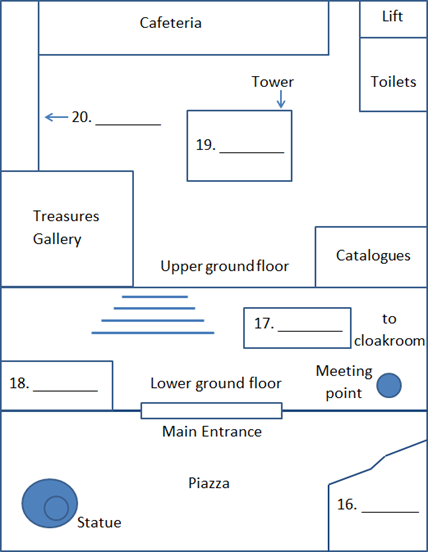IELTS Listening - CHOICE ROUTE
Listening Test 2 Volume 14
Listening Section 1
Listen carefully and answer Questions 1 to 10:
Questions 1-3
Choose the correct letter, A. B or C
Example
Martin wants to
A sell a flat.
B rent a flat.
C buy a flat.
1 What is Martin’s occupation?
2 The friends would prefer somewhere with
3 Phil would rather live in
Questions 4-10
Complete the table below.
Write NO MORE THAN THREE WORDS AND/OR A NUMBER for each answer.
| Details of flats available | ||
| Location | Features | Good (+) and bad (-) points |
| Bridge Street, near the 4 | • 3 bedrooms • very big living room |
(+) 5 (£) a month
(+) transport links (-) no shower (-) could be 6 |
| 7 | • 4 bedrooms
• living room • 8 |
(+) 9 and
well equipped (+) shower (+) will be 10 (-) £800 a month |
Listening Section 2
Listen carefully and answer Questions 11 to 20:
Questions 11-15
Complete the sentences below.
Write NO MORE THAN THREE WORDS for each answer.
The British Library
The reading rooms are only open for group visits on 11
The library was officially opened in 12
All the library rooms together cover 13 m2.
The library is financed by the 14
The main function of the library is to provide resources for people doing 15
Questions 16-20
Label the plan below.
Write NO MORE THAN THREE WORDS for each answer.
Plan of the British Library

16
17
18
19
20
Listening Section 3
Listen carefully and answer Questions 21 to 30:
Questions 21-25
Choose the correct answer A. B or C
Project on work placement
21 The main aim of Dave’s project is to
22 Dave’s project is based on schemes in
23 How many academic organisations returned Dave’s questionnaire?
24 Dave wanted his questionnaires to be completed by company
25 Dr Green wants Dave to provide a full list of
Questions 26-30
Complete the notes below.
Write NO MORE THAN TWO WORDS for each answer.
Notes on project
Introduction
– improve the 26 of ideas
– include a 27 of ‘Work Placement’
– have separate sections for literature survey and research 28 and methods
Findings
Preparation stage – add summary
29 development – good
Constraints on learning – provide better links to the 30 from research
Listening Section 4
Listen carefully and answer Questions 31 to 40:
Questions 31-35
Complete the sentences below
Write NO MORE THAN THREE WORDS for each answer.
Bilingualism can be defined as having an equal level of communicative 31 in two or more languages.
Early research suggested that bilingualism caused problems with 32 and mental development.
Early research into bilingualism is now rejected because it did not consider the 33 backgrounds of the children
It is now thought that there is a 34 bilingualism and cognitive skills in children.
Research done by Ellen Bialystok in Canada now suggests that the effects of bilingualism also apply to 35
Questions 36-40
Choose the correct letter A, B or C.
36 In Dr Bialystok’s experiment, the subjects had to react according to
37 The experiment demonstrated the ‘Simon effect’ because it involved a conflict between
38 The experiment shows that, compared with the monolingual subjects, the bilingual subjects
39 The results of the experiment indicate that bilingual people may be better at
40 Dr Bialystok’s first and second experiments both suggest that bilingualism may
ANSWER
1 B
2 A
3 C
4 bus station
5 450
6 noisy
7 Hills Avenue
8 dining room
9 modern/very modern
10 quiet
11 Sundays
12 1998
13 100,000/100000/one hundred thousand/a hundred thousand
14 government
15 research
16 Conference Centre/Center
17 information desk
18 bookshop
19 King(’)s Library
20 stamp display
21 B
22 C
23 A
24 B
25 A
26 organisation
27 definition
28 aims
29 Key Skills
30 evidence
31 proficiency
32 learning
33 social and economic
34 positive
35 adults
36 A
37 A
38 B
39 C
40 A

